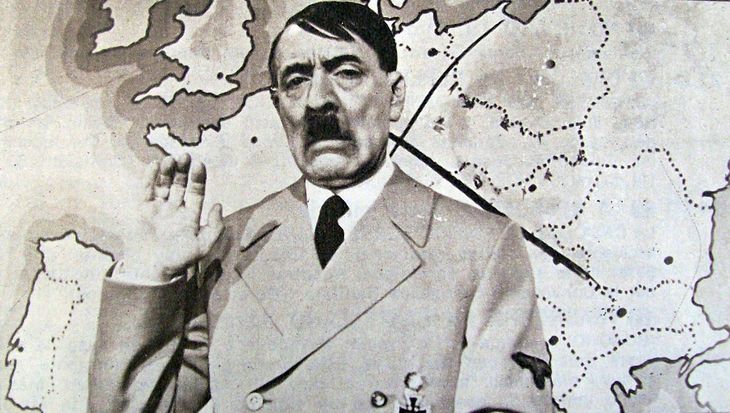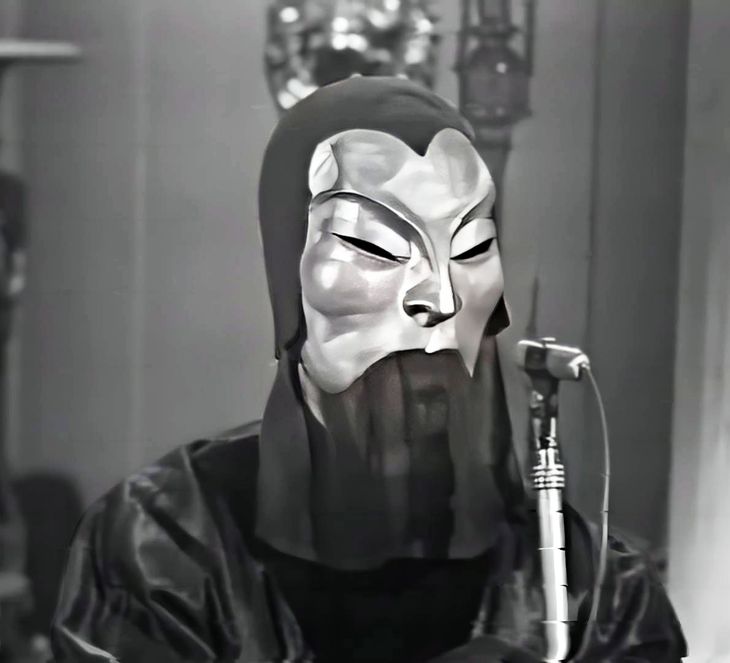For several generations, especially among horror lovers – in which Ibanez Mint He was a pioneer in the country and in Spain, when this genre did not enjoy the popularity or the interest of the industry that exists today. “The octopus…” It became a “cult” series, a cult, by the way, that would be much less if the videotapes of “The man who returned from the dead”like those of the other five series he starred in Ibanez Mint In 1969 and 1970, they would not have been lost, burned or erased – the versions are different, although the actor himself was inclined to believe that they had been used to record other materials.
Not to mention the other two legendary series with which Ibanez Mintin the early 60s, with black and white television and the beginnings of open tape recordings, had done for Channel 7, “The Phantom of the Opera”whose scenes filmed at the Teatro Colón are part of the great history of Argentine television (even if only in memory, without material testimony), and “The cursed doll”in which the scene in which the protagonist, called Benedict Masoncaused more than one fainting spell among an audience not accustomed to seeing this type of explicit violence. Both were based on novels by Gaston Leroux.
Man.jpg
The mask of Elmer Van Hess, the central character of “The Man Who Returned from the Dead” (1969)
The man who came back from the dead
“The man who returned from the dead”which had a forgettable remake in 2007 on El Trece, with Diego Peretti in the leading role, it was broadcast on Thursdays at 10 pm, between March and June 1969. In those years of only five free-to-air channels, without cable or streaming, There were episodes that reached the rating of a World Cup final.The country stopped to see Daffodil commit their revenge.
Unjustly accused of death, Elmer Van Hess He sold his body to science so that his wife, Erika (Fernanda Mistral) earned some money, but she was unaware that she would become the future wife of the head executioner, Dr. Mortensen (Eduardo Rudy)), who carried out the operation that transformed him into a machine.
The names of his unconditional followers were noted in the cast Beatriz Dia Quirogawith whom he worked on most of the series, including “The black octopus”in addition to Oscar Ferrigno, Alberto Argibay, Claudio García Satur, Erika Wallner, Romualdo Quiroga, Néstor Hugo Rivas and Francisco de Paulaamong many others. A month ago, a chance discovery on Channel 9 managed to rescue, albeit in poor technical condition, around a quarter of an hour of the entire series, which can also be found on YouTube.
“The man…” It was as successful as it was difficult. First, he had to fight in court against a person named Van Hess, who tried to prevent his surname from being used. But that was the least of the obstacles. One of the chapters ended with Elmerdisguised as a wet nurse, led the children of Dr. Mortensen and Erika by the hand through the street, with the undoubted intention of killing them.
The flood of public protests, especially in the newspapers’ readers’ emails, was such that, according to reports, Abel Santa Cruz He had to modify the beginning of the next chapter, and re-record that part, so that the false nurse reappears in the house bringing the children back safe and sound. An implausible continuity, but another would not have been feasible. There were also disagreements between Rudy and Ibáñez mintto the point that the actor missed the recording of several episodes and intended to resign, which would have been fatal for the series.
However, the most resonant case was the scene where Mortensen vivisected Van Hess on camera, which, like the guillotine scene in “The cursed doll”, It caused thousands of viewers to feel nauseous or to cover their eyes. It was said at the time that its realism, considering the rudimentary special effects available, was astonishing. But there is another explanation, that the film itself Ibanez Mint He first gave this newspaper information in the report we made with him Diego Curubeto On August 28, 1992, the actor returned to the country from Spain to celebrate his 80th birthday.
In fact, it was a real corpse, an NN from the Rawson Hospital morgue, destined for the Faculty of Medicine, whose autopsy was recorded for the series. “Romay (named after the director of Channel 9, Alejandro Romay) didn’t know anything. I did it secretly, and even a cameraman fainted on me.”he told us then. “At the time I said that it was all plastic, that it had been made by Mr. So-and-so, because if I had told the truth I would have been crucified.”he confessed long after.
Monster.jpg

Narciso Ibáñez Menta as Adolf Hitler in “The Monster is Not Dead” (1970)
The following miniseries
Despite the drag of “The man…” subsequent miniseries that Ibanez Mint The films he starred in in 1969 and 1970 did not have the same effect on the public, and their level was, with perhaps two exceptions, well below the initial success. They were “A Pact with the Witches” and “Satyr”and the following year “The Robot”, “The Monster is Not Dead” and “Dracula Again”.
“A pact with the witches” It was the worst; so much so that its abstruse, absurd plot about the world of witchcraft gave the impression of having been thought up in a hurry, without revision, just to keep the audience captive. “The man…”. Nobody seemed really interested in her, not even herself. Ibanez Mintwho was absent from the country for a while due to contracts in Spain, and it was said that his role, with makeup that made him unrecognizable, had been played by a double. There was even mention of Raul Rossifamous actor from the stable cast of Channel 9 of Romay.
The last one of that year was better: “Satyr”inspired by criminals who had made headlines in newspapers and who only killed women. At that time, there was no talk of serial killers or femicides, but that was what they were. The plot, set in a theatre, dealt with women’s crimes in the manner of Shakespeare: a drowned woman died, like Ophelia in “Hamlet”; another hanged woman, like Desdemona in “Othello”and so on.
The plot had strong similarities, if not to say that it was plagiarized, by an English film shot four years later, “The Merchant of Death” (“Theatre Of Blood”)in which the protagonist, an actor played by Vincent Pricehe took revenge on the critics who had attacked him by killing them in Shakespearean fashion.
“Satyr” It had one more peculiarity, unusual in that era of strict censorship (the country was still governed by the dictator Onganiathe one from the night of the long sticks and the one who mounted the Qualification Entity with Ramiro de la Fuente in the lead): her erotically daring scenes. Channel 9 Each chapter was preceded by a sign warning that it was only suitable for those over 18 years of age.
“The robot” opened in 1970, and it was also a failure. An implausible production, lacking interest, in which the only novelty was The return of Silvia Legrandthe sister of Mirthato television. Emilio Disi and Oscar Ferrigno They were also part of the cast: both played openly homosexuals, another audacity on television at that time.
The level rose noticeably with the second series of the year, “The monster is not dead”with a script by Horacio Meyrialle. Alberto Argibay I played a kind of Simon Wiesenthalthe Nazi hunter, who explained at the United Nations that Adolf Hitler had not died, and that he intended to find him in order to bring him to justice. Ibanez MintIn each chapter, he played a different character, who due to certain characteristics, could be Hitler camouflaged. Some surviving fragments of this series can be found on YouTube.
Finally, the series with which Narciso Ibáñez Menta said goodbye to Argentina for many years, was “Dracula again”a variation on the classic story of Bram Stokerwith extremely “gore” details due to the time and open television. In that series she supported him, as a vampire, Martha GonzalezIt was the second time (and not the best) that Narciso Ibáñez Menta played the famous Transylvanian count.
The black octopus
It took fifteen years for Ibanez Mint would return to Channel 9, with great fanfare, to lead the series that promised to recover the laurels of “The man who returned from the dead”But, as is well known, times do not repeat themselves. The world was different, the competition was different, and the evolution of the horror genre made the attempt to achieve the same effect as three decades ago look dated.
The series had a high rating (although not nearly as high as before), and a large part of the public, accustomed to consuming other kinds of products, forgave “The octopus…” many of the plot’s improbabilities. Before, everything was accepted, even the characters’ foreign men and the lack of a defined place where the action took place, but in 1985 this was no longer the case. However, None of this could break the romance that his admirers maintained with that master of the macabre who, in his childhood (he was a precocious actor), was called Narcisín.
Time had also passed for many of his usual companions: the aforementioned Beatriz Dia Quiroga, Erika Wallner, Juan Carlos Galvan and especially, Oscar Ferrignowhat in “The man…” had composed extraordinarily a military man complicated by the death sentence of Van Hess, Colonel Larsenand who now became a police inspector. Ferrigno He was already ill, his voice indicated, and he died not long after the series concluded.
Nevertheless, “The black octopus”, followed by so many horror movie fans who made it Ibanez Mintas has been said, a genuine (and well-deserved) cult, is preserved in its entirety, and now enhanced by digitalisation. In a country that tends to destroy a large part of its audiovisual treasures, this is almost miraculous.
Source: Ambito
I am an author and journalist who has worked in the entertainment industry for over a decade. I currently work as a news editor at a major news website, and my focus is on covering the latest trends in entertainment. I also write occasional pieces for other outlets, and have authored two books about the entertainment industry.




